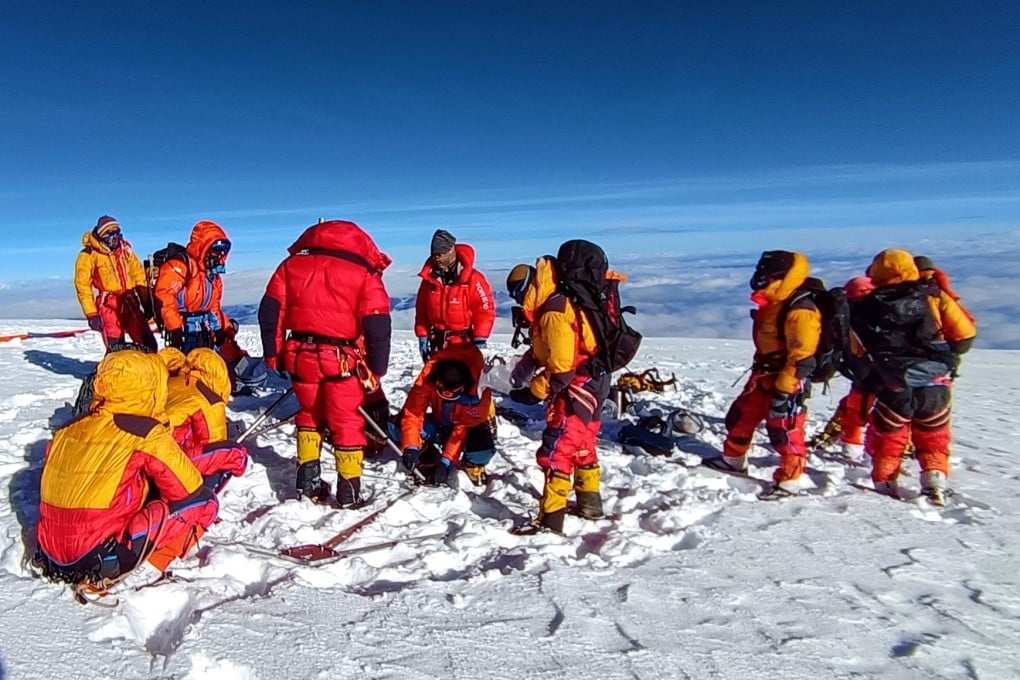On the roof of the world, a Chinese team tests the extremes of environmental science
- Researchers summit Cho Oyu, one of the planet’s highest mountains to monitor high-altitude changes and their effects on the Qinghai-Tibet Plateau
- Team leader says the peak’s thick ice and snow cover make it a rich potential ecological archive

A Chinese scientific expedition team reached the summit of Cho Oyu, the world’s sixth-highest mountain, on Sunday morning, state media reported.
The 18 members of the expedition team will undertake various scientific tasks at an extreme altitude, including setting up high-altitude automatic weather stations, measuring the thickness of the summit’s ice and snow, drilling ice cores, and collecting snow, ice and rock samples.
Its peak is about 8,201 metres above sea level and, as with Everest, is covered in snow year round.
Expedition commander An Baosheng said the expedition involved more than 120 scientists from four scientific teams, and aimed to uncover the effects of changes in high-altitude areas on the environment of the Qinghai-Tibet Plateau.